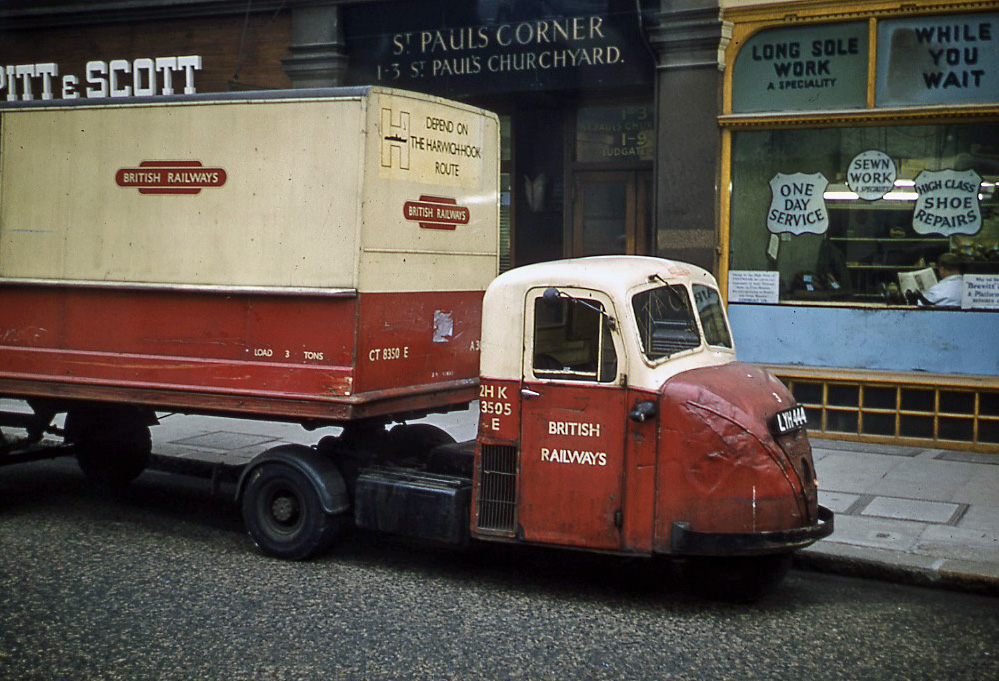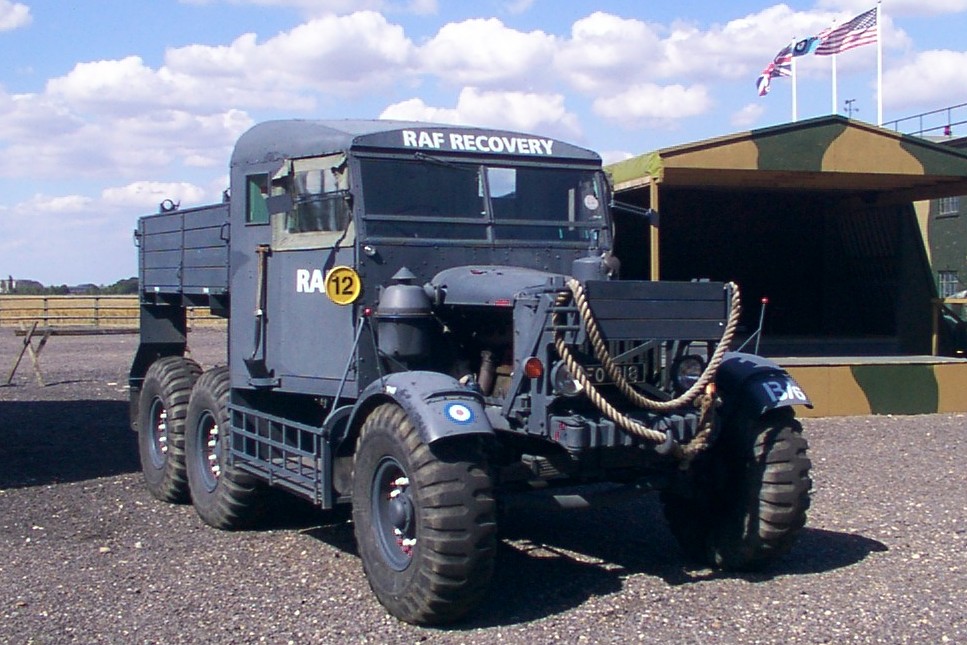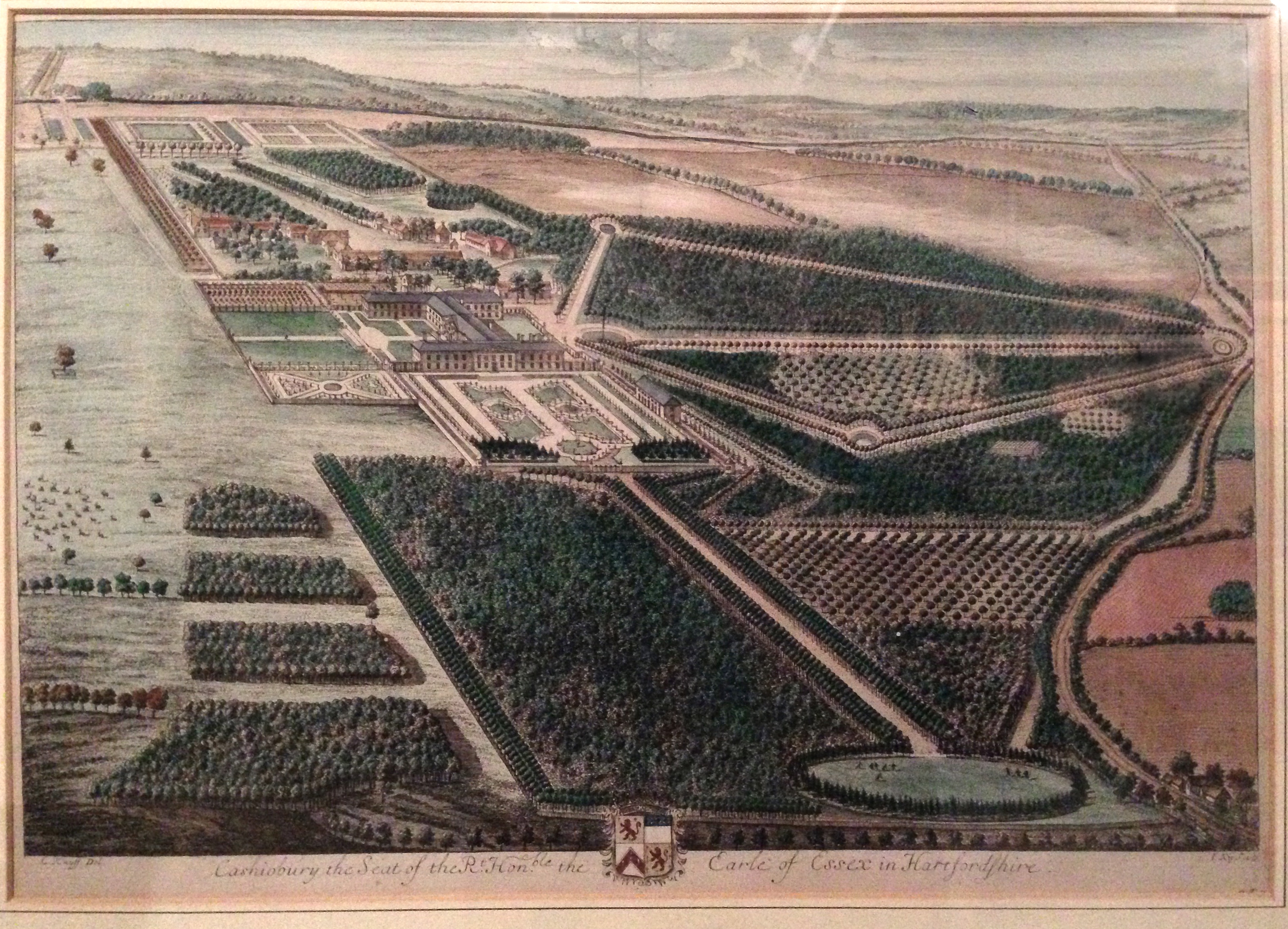|
Scammell
Scammell Lorries Limited was a British manufacturer of trucks, particularly specialist and military off-road vehicles, between 1921 and 1988. From 1955 Scammell was part of Leyland Motors. History Scammell started as a late- Victorian period wheelwright and coach-building business, G Scammell & Nephew Ltd in Spitalfields, London. George Scammell, the founder, was joined by his nephew Richard and Richard's sons Alfred and James. By the early 1900s, the firm had become financially stable, providing maintenance to customers of Foden steam wagons. One such customer, Edward Rudd, had imported a Knox Automobile tractor from the United States, and impressed with its low weight/high hauling power had asked Scammell if they could make a similar model of their own. However, the outbreak of World War I in 1914 stopped the project and presented itself as a turning point in road transport history. Mechanical transport was seen to work, proving its vast potential beyond doubt to forward-th ... [...More Info...] [...Related Items...] OR: [Wikipedia] [Google] [Baidu] |
Scammell Scarab
The Scammell Scarab is a British 3-wheeled tractor unit produced by the truck manufacturer Scammell between 1948 and 1967. These vehicles are often known as "Snub-nose Trucks" or "Snub-nose Lorries" because of the round hood in front of the cab. Development and production history The Scammell Scarab was the successor to the Scammell Mechanical Horse and production began in 1948. Its name is commonly believed to be derived from the rounded bonnet that resembled the elytra (wing covers) of a Scarab beetle, but the name really comes from a more conventional source. It was a portmanteau of Scammell and the Arab horse which the Mechanical Horse replaced in British Railways usage. The official Scammell Lorries advertisement film makes reference to this. It was extremely popular with British Railways and other companies which made deliveries within built-up areas. The Ministry of Defence also used the Scarab and trailers for predominantly internal transport on large military bases. In ... [...More Info...] [...Related Items...] OR: [Wikipedia] [Google] [Baidu] |
Scammell Mechanical Horse
The concept of the Mechanical Horse tractor unit with an easily detached articulated trailer was conceived in the early 1930s by Napier & Son. It has one front wheel in the midline. The London and North Eastern Railway had approached Napier for an answer to the problem of replacing horses for local haulage purposes, while retaining the flexibility of changing the wagons and the maneuverability of the horse and wagon. These vehicles are often known as "Snub-nose Trucks" or "Snub-nose Lorries" because of the round hood in front of the cab. Mechanical Horse In 1933 Scammell Lorries Ltd purchased the three wheeled tractor unit design from the Napier Company and promptly turned it into the famous Mechanical Horse. Production of the 3-wheeled Mechanical Horse commenced in 1934. The design had been refined in 1933 by Oliver Danson North, who modified the original prototype. This featured automatic trailer coupling (Relatives believe the automatic coupling which remains virtually unch ... [...More Info...] [...Related Items...] OR: [Wikipedia] [Google] [Baidu] |
Scammell Pioneer
The Scammell Pioneer was a British 6×4 (drivetrain), 6×4 tractor unit used in World War II as an artillery tractor, recovery vehicle and tank transporter. Development Designed as a 6×4 (drivetrain), 6×4 Off-roading, off-road vehicle for use in Britain's colonies where Road surface#Metalling, metalled (sealed) roads were scarce, the Pioneer was first produced in 1927. Though lacking all-wheel drive, its combination of a suspension with great travel, excellent traction, and a low-revving engine gave it impressive pulling power on rough ground at low speeds. Though not designed for military use, the British War Office purchased a single petrol engined example in 1932. Equipped as a tank transporter with a permanently coupled 18t semi-trailer, it was assigned to a training unit but did not initially catch on. Additional transporters were not purchased until 1937. Military use With the exception of the single 1932 tank transporter, all Pioneers purchased by the British Army were ... [...More Info...] [...Related Items...] OR: [Wikipedia] [Google] [Baidu] |
Oliver Danson North
Oliver Danson North (1887, Willesden Green — 11 November 1968, Haslemere) was a British engineer and automobile designer in the early twentieth century, working for Scammell Lorries from 1922. Career He was responsible, most notably, for the Scammell Pioneer, a three-axle heavy truck, and the three-wheeled Scammell Mechanical Horse, which subsequently evolved into the Scammell Scarab, a familiar sight in cities and towns often engaged in postal and parcel deliveries. He was also heavily involved in Scammell's design and manufacture of the two 'SCAMMELL 100 Tonner' low-loader vehicles, delivered in early 1930 to Marston Road Services in Liverpool and H.E. Coley in Dartford, Kent Kent is a Ceremonial counties of England, ceremonial county in South East England. It is bordered by Essex across the Thames Estuary to the north, the Strait of Dover to the south-east, East Sussex to the south-west, Surrey to the west, and Gr .... The vehicle delivered to Marston Road Serv ... [...More Info...] [...Related Items...] OR: [Wikipedia] [Google] [Baidu] |
Leyland Motors
Leyland Motors Limited (later known as the Leyland Motor Corporation) was an English vehicle manufacturer of lorries, buses and trolleybuses. The company diversified into car manufacturing with its acquisitions of Triumph and Rover in 1960 and 1967, respectively. It gave its name to the British Leyland Motor Corporation, formed when it merged with British Motor Holdings in 1968, to become British Leyland after having been nationalised. British Leyland later changed its name to simply BL, then in 1986 to Rover Group. After the various vehicle manufacturing businesses of BL and its successors went defunct or were divested, the following marques survived: Jaguar and Land Rover, now built by Jaguar Land Rover owned by TATA Motors; MG, now built by MG Motor, and Mini, now built by BMW. The truck building operation survived largely intact as Leyland Trucks, a subsidiary of Paccar. History Beginning Leyland Motors has a long history dating from 1896, when the Sumne ... [...More Info...] [...Related Items...] OR: [Wikipedia] [Google] [Baidu] |
FAR (Tracteurs FAR)
Chenard-Walcker, also known as Chenard & Walcker, was a French automobile and commercial vehicle manufacturer from 1898 to 1946. Chenard-Walcker then designed and manufactured trucks marketed via Peugeot sales channels until the 1970s. The factory was at first in Asnières-sur-Seine moving to Gennevilliers in 1906. The make is remembered as the winner of the first 24 Hours of Le Mans, Le Mans 24 Hours Race in 1923. History Ernest Chenard (1861–1922) was a railway engineer and maker of bicycles with a factory in the rue de Normandie at Asnières-sur-Seine, then just outside Paris on its north side. He joined with mining engineer Henri Walcker (1877–1912) in 1898 to make motor tricycles. Together they founded their automobile business on 19 January 1899, with Chenard in charge of design and Walcker sales and finance. The business was formally registered as Chenard, Walcker et Compagnie in 1900. In order to ensure short-term commercial viability they started out producing a quad ... [...More Info...] [...Related Items...] OR: [Wikipedia] [Google] [Baidu] |
Alvis Unipower
Universal Power Drives was a British truck manufacturer which branded its trucks with the ''Unipower'' marque. History ''Universal Power Drives'' was founded in 1934 with a factory in Perivale and its head office in Aldwych, London. During the 1930s, 40s and 50s it specialised in producing 4x4 forestry logging trucks. In 1972 it launched the 4x4 Unipower Invader suited to fire-fighting and construction use. Todd Motors in New Zealand produced the TS3 Commer Truck, in the early 1970s, with a Unipower tandem drive assembly as a factory option. In January 1966 they exhibited a sports car, the Unipower GT at the Racing Car Show. Another car they produced was the Quasar-Unipower which was built in 1967 and 1968. In 1977 the company was acquired by Caterpillar Inc and production was moved to Thames Ditton, Surrey. In 1988 the company started a new enterprise in Watford to provide continuity of support for Scammell Lorries, Scammell trucks following the closure of the Leyland DAF ... [...More Info...] [...Related Items...] OR: [Wikipedia] [Google] [Baidu] |
Karrier
Karrier was a British marque of motorised municipal appliances and light commercial vehicles and trolley buses manufactured at Karrier Works, Huddersfield, West Yorkshire, by Clayton and Co. (Huddersfield) Limited. They began making Karrier motor vehicles in 1908 in Queen Street South, Huddersfield. In 1920, H.F. Clayton sold Clayton and Co's Huddersfield business into public listed company Karrier Motors while keeping their Penistone operation separate. Mechanical and electrical engineers Clayton & Co Penistone, remain active in 2020 as Clayton Penistone Group. Karrier produced buses as well as their other municipal vehicles and in latter years, especially during the Second World War, Trolleybuses, notably their Karrier 'W' model. In 1934 Karrier became part of the Rootes Group where it retained its brand identity though the business was operated as part of Rootes's Commer commercial vehicle operation. The Karrier name began to disappear from products when Chrysler bought Roote ... [...More Info...] [...Related Items...] OR: [Wikipedia] [Google] [Baidu] |
Watford
Watford () is a town and non-metropolitan district with Borough status in the United Kingdom, borough status in Hertfordshire, England, northwest of Central London, on the banks of the River Colne, Hertfordshire, River Colne. Initially a small market town, the Grand Junction Canal encouraged the construction of paper-making mills, print works, and brewery, breweries. While industry has declined in Watford, its location near London and transport links have attracted several companies to site their headquarters in the town. Cassiobury Park is a public park that was once the manor estate of the Earls of Essex. The town developed next to the River Colne on land belonging to St Albans Abbey. In the 12th century, a charter was granted allowing a market, and the building of St Mary's Church, Watford, St Mary's Church began. The town grew partly due to travellers going to Berkhamsted Castle and the royal palace at Kings Langley. A mansion was built at Cassiobury House, Cassiobury in t ... [...More Info...] [...Related Items...] OR: [Wikipedia] [Google] [Baidu] |
Spitalfields
Spitalfields () is an area in London, England and is located in the London Borough of Tower Hamlets. It is in East London and situated in the East End of London, East End. Spitalfields is formed around Commercial Street, London, Commercial Street and Brick Lane. It has several markets, including New Spitalfields Market, Spitalfields Market, the historic Old Spitalfields Market, Brick Lane Market and Petticoat Lane Market. The area has a long attracted migrants from overseas, including many Jews, whose presence gained the area the 19th century nickname of ''Little Jerusalem''. It was a Hamlet (autonomous area) of the large ancient parish of Stepney (parish), Stepney in Middlesex, and became an independent parish in 1729. Just outside the City of London, it formed part of the County of London from 1889 and was part of the Metropolitan Borough of Stepney from 1900. It was abolished as a civil parish in 1921. Origin and administration Toponymy The name Spitalfields appears in the f ... [...More Info...] [...Related Items...] OR: [Wikipedia] [Google] [Baidu] |








